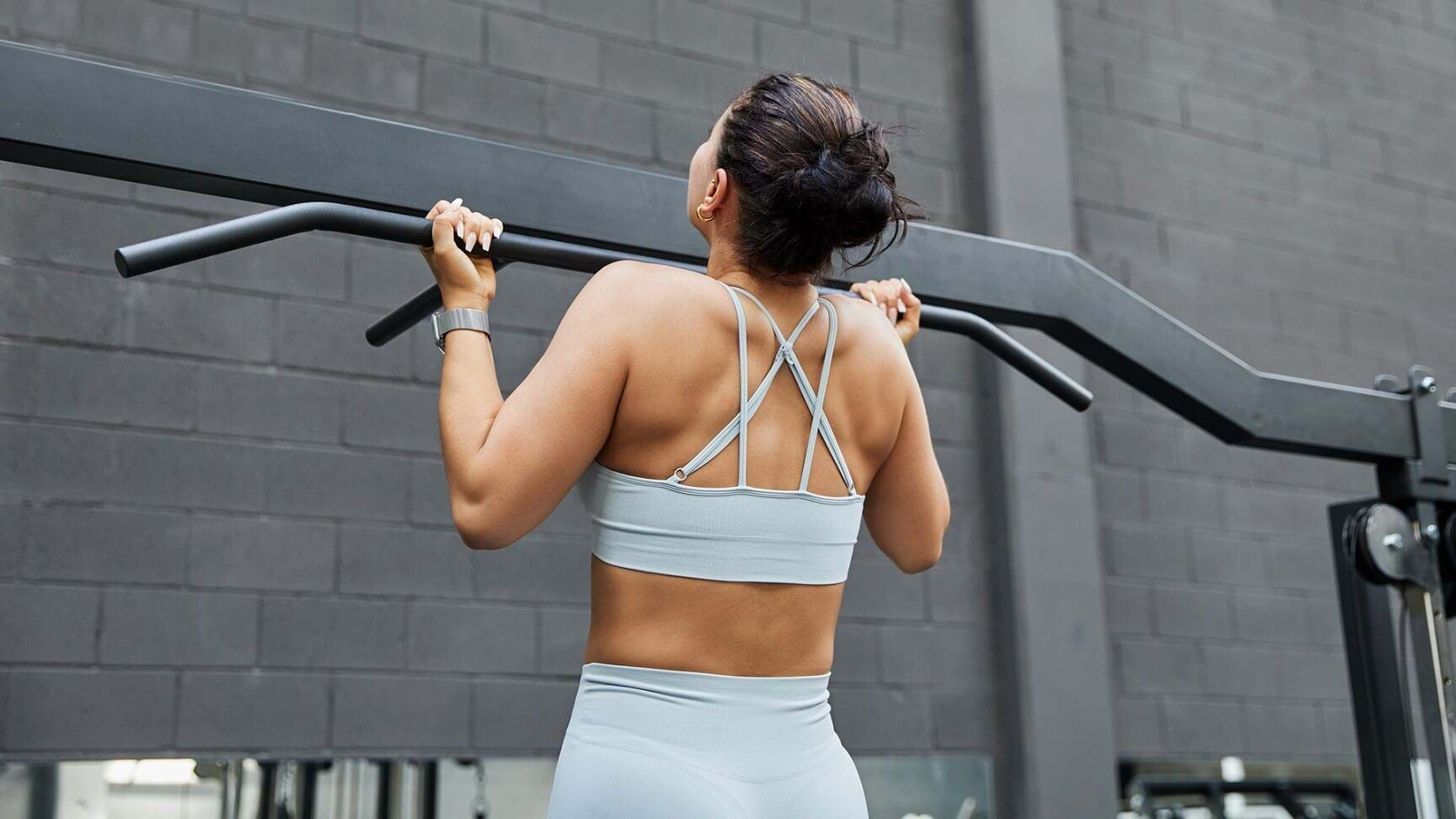Chin Ups
What are chin ups?

Chin ups are a compound back exercise performed like a pull up but using a supinated grip to engage the biceps as well as the back muscles. Turning the palms towards the body as you pull yourself engages the rhomboid muscles which retract the shoulder blades, the trapezius muscles, and the rear deltoids.
Chin ups are considered slightly easier than pull ups but are still a challenging exercise that will work your back, biceps, shoulders, core, forearm and grip. Adding chin ups to your upper body training will build muscle mass, power, and functional strength.
Doing chin ups as well as pull ups (or a pull up variation) ensures you work all the muscles of the back from different angles, for a more comprehensive upper body workout. Chin ups shift the focus to the muscles across the upper back, helping balance out the development of your upper body.
Chin ups are an intermediate exercise, and beginners can use assistance from resistance bands or the gym pull up machine. Try combining chin ups with other back exercises like rows or lat pulldown, or with push exercises like push ups and dips to work opposing muscles. Take a look at our chin up technique instructions and demo video below.
Check out some other pull up exercises: Pull Ups, Assisted Pull Ups, Seated Pull Ups
Commonly Asked Questions About Chin Ups
Chin ups and pull ups are both pulling upper body exercises, but they use a different grip which means you work slightly different muscles. Chin ups use a supinated grip (palms facing towards you), placing more emphasis on the biceps and muscles of the mid back. Pull ups use a pronated grip (palms facing away), working the lats and shoulders. Both exercises are useful for upper body strength and back muscle development.
Chin ups primarily work the muscles of the middle and upper back, including the rhomboids (which pull the shoulder blades in), the trapezius, and rear deltoids. Chin ups also work the biceps as you pull yourself up with a supinated grip. They also work the forearms, shoulders, and core muscles.
Alternatives to chin ups include pulling exercises like inverted rows and lat pull downs done with a supinated grip (palms facing towards you). You could also do assisted chin ups using the gym pull up machine or resistance bands to take some of your bodyweight.
Chin ups are a compound exercise that work lots of major muscle groups. They will increase upper body muscle mass and strength, particularly in the biceps and back, and improve your grip strength. Chin ups are a versatile exercise that you can incorporate into full body workouts, upper body day, or pull sessions.
Chin Up Tips
Keep your core engaged to prevent swinging.
Think about pulling your elbows into your ribs, keeping arms close to your side.
Lower down slowly with control
How To Do Chin Ups
Select a bar that allows you to vertically hang at the bottom of the chin up.
Jump up and take hold of the bar with an underhand grip, hands around shoulder width apart.
Allow your arms and legs to fully extend and engage your core.
Drive your elbows into your ribs and engage your back to pull yourself up.
Pull your chin over the bar and lower back down with control.
If you’re not sure if any of the above exercises are suitable for you, please consult your doctor before you start it. Need guidance on how to perform the exercise? Ask a personal trainer at your gym.